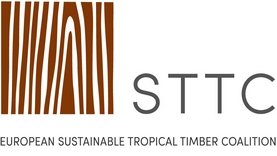The multiple values of tropical forests in a nutshell

Photo: CIFOR
A new fact sheet from Fair&Precious (F&P) provides a quick-read guide to tropical forests – their extent, their environmental and economic value and the vital need for their maintenance through sustainable management.
‘Tropical forests – the facts and figures’ underlines the key role the world’s 1.8 billion ha of tropical forests play in climate regulation through carbon sequestration from the atmosphere. Their carbon storage potential varies from region to region, but in total the forests of South America, sub-Saharan Africa, South East Asia and Oceania hold an estimated 247 gigatonnes of carbon. That is nearly five times accumulated annual global greenhouse gas emissions. Tropical forests provide a huge range of ecosystem services, benefiting not just local forest communities, but the human population worldwide. These include provision of food, fresh water, raw materials – including, of course, timber –and medicinal resources.
In recent years the economic value of these services – the forest’s ‘natural capital’ – has been increasingly closely studied and it is now calculated that they are worth an estimated US$2,700 per ha per year. Globally, that adds up to an annual figure of US$4.86 trillion. Despite increasing understanding of the all-round worth of the tropical forest, however, large areas are still lost each year, primarily through conversion to agriculture and building development. It is estimated that the average annual deforestation rate since 1990 has been 0.5% of total tropical forest area, with 80% of that loss concentrated in four countries: Brazil, Indonesia, Democratic Republic of the Congo and Malaysia. The fact sheet points out that other countries, including Suriname, Panama, Colombia, Peru, Belize, Gabon, Guyana, Bhutan, Zambia and French Guiana, are succeeding in maintaining their forest resources and are categorized as ‘high forest cover and low deforestation’ (HFLD) under the UN Reducing Emissions from Deforestation and Forest Degradation programme (REDD+).
The key for the future of the climate, of bio-diversity and for humankind to continue to benefit from the tropical forest’s abundance of ecosystem services, states the fact sheet, is for more of it to come under verified sustainable management. Currently just 6.5% of the total area is certified as sustainably managed under the FSC and PEFC schemes. That needs to increase and one way to incentivize this is to grow the international market for verified sustainable tropical timber. “For example, it is calculated that, if the seven leading European tropical timber-importing countries bought exclusively verified sustainable material, an additional 12.5 million hectares of tropical forest would come under sustainable management to meet that demand,” the F&P fact sheet concludes.



